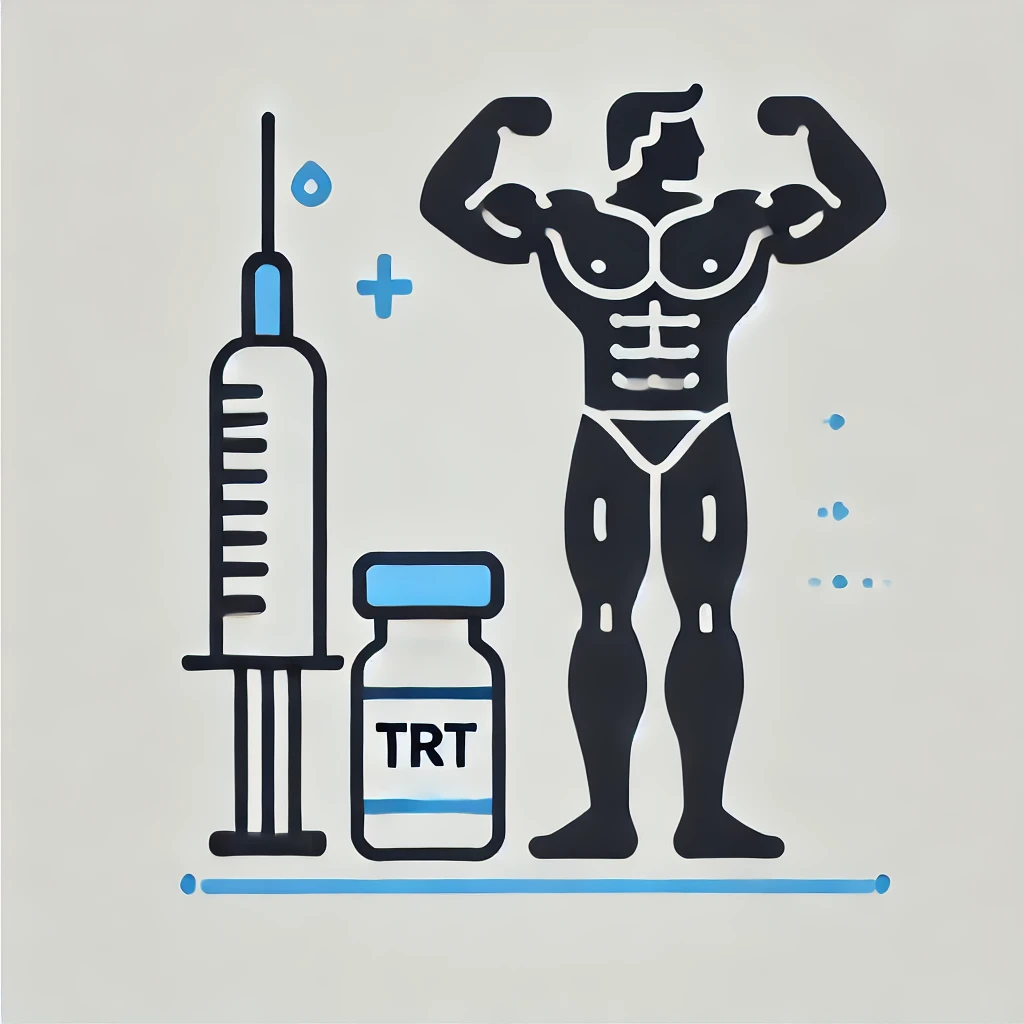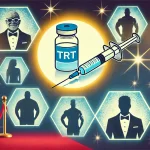Testosterone Replacement Therapy (TRT) refers to the medication therapy that is prescribed to men with low testosterone levels. Low testosterone can be a sign of an underlying disease or just the result of a normal aging process. When testosterone levels drop in the body it can lead to fatigue, decreased muscle mass, a decrease in libido and other related health issues.
Testosterone is FDA-approved as replacement therapy only for men who have low testosterone levels due to disorders of the testicles, pituitary gland, or brain that cause a condition called hypogonadism.
A huge decline in testosterone levels have been witnessed for the past few decades, as mentioned in an article we published earlier.
The procedure of getting a prescription for testosterone and the criteria for such a prescription differs slightly from country to country due to the differences in health care systems and regulations. The overall step remains the same. In this article, we will discuss how to obtain a testosterone prescription.
Step one: Consultation
This step usually involves a consultation with a healthcare professional, an endocrinologist or a urologist. You will tell the doctor your symptoms of low mood, weakness, fatigue, erectile dysfunction and decreased libido. The doctor will take a thorough history and perform some examinations.
This consultation can be in public hospitals like in the NHS. Additionally this consultation can take place in a men’s health private clinic.
Step two: Blood Testing
To qualify for TRT your doctor will do some blood tests. This will involve some baseline labs and serum testosterone levels. Guidelines vary between countries as to what levels indicate the replacement therapy. Usually Testosterone levels are preferably performed in the morning when its levels are highest. According to US guidelines, levels below 300 ng/dL may warrant TRT.
Your doctor might also want to run some additional tests to ensure you are a good candidate for TRT. They will also take the time to explain to you the pros and cons of such a therapy protocol and what you can expect from it. It’s very important that you have a full understanding of this therapy protol before you get started.
Step three: Diagnosis & prescription
If your testosterone levels are below the threshold and you have associated symptoms, your doctor will diagnose the disease and prescribe testosterone replacement therapy. There are several options you can choose like injections, gels, patches, or pellets. The route of administration will depend on your convenience and what your health insurance covers.
Step four: Ongoing monitoring
Once prescribed, you will be monitored regularly with followup blood tests to ensure safe and effective treatment. These Blood tests need to be done at regular intervals after starting testosterone replacement therapy (TRT) to avoid complications and modify the treatment dose if necessary. TRT is usually a lifelong commitment.
Conclusion
The process of getting a testosterone prescription is fairly similar across countries. It typically requires a consultation, blood tests, and a medical diagnosis. The regulations and ease of access can vary. In countries like the U.S. and Canada, TRT is heavily regulated and can be expensive without insurance. Whereas countries like Turkey offer a more affordable option with medical tourism. Regardless of the country, TRT should always be pursued under the supervision of a licensed medical professional alongwith monitoring to ensure safety and effectiveness.
Disclaimer:
No content on this site, regardless of date, should ever be used as a substitute for direct medical advice from your doctor or other qualified clinician.
TRT FAQ
1. What is Testosterone Replacement Therapy (TRT)? Testosterone Replacement Therapy (TRT) is a medical treatment designed to boost testosterone levels in men who have low levels due to specific medical conditions. It can help with symptoms such as fatigue, muscle loss, and reduced libido by getting testosterone back to normal levels.
2. Who qualifies for TRT? TRT is intended for men diagnosed with low testosterone resulting from issues with the testicles, pituitary gland, or brain, which can prevent normal hormone production. A diagnosis is typically confirmed through symptoms evaluation and blood tests.
3. What symptoms indicate I might need TRT? Common symptoms of low testosterone include ongoing fatigue, decreased muscle strength, and low sexual desire. If these symptoms persist, it might be worth discussing with a healthcare provider whether TRT could help.
4. How do I get a testosterone prescription? The process starts with a consultation with a healthcare provider like an endocrinologist or urologist. This visit involves discussing your symptoms and medical history, followed by blood tests to measure your testosterone levels. If your levels are low and you have related symptoms, your doctor may prescribe TRT.
5. What forms of testosterone treatment are available? Testosterone can be administered in several forms, including injections, gels, patches, or pellets. The choice depends on personal preference, cost, and the form your doctor believes will work best for your situation.
6. What are considered normal testosterone levels, and what level requires TRT? Generally, testosterone levels below 300 ng/dL may be considered low and might qualify for TRT. Blood tests are typically performed in the morning when testosterone levels are highest for the most accurate measurement.
7. How often will I need to visit my doctor during TRT? Regular monitoring is crucial while on TRT. Initially, you may need frequent visits to adjust the dosage and assess how well the treatment is working. Once your levels stabilize, these visits may become less frequent but will continue to ensure the treatment remains safe and effective.
8. Are there any risks associated with TRT? Like any treatment, TRT has potential side effects, which can include acne, sleep disturbances, and an increased red blood cell count. It’s important to discuss the potential risks with your healthcare provider.
9. Is TRT covered by health insurance? Coverage varies by insurance plan and country. In some places, TRT can be expensive if not covered by health insurance. It’s advisable to check with your insurance provider about coverage details.
10. Can I stop TRT if I feel better? TRT is usually a long-term treatment. Stopping therapy abruptly can cause symptoms to return. Any changes to your treatment plan should be done under the supervision of your healthcare provider.
11. Is TRT legal and regulated everywhere? TRT is legal in many countries, but regulations around its prescription and use can vary. Always ensure that you are receiving treatment from a licensed and qualified healthcare provider to avoid unsafe practices.
Conclusion: TRT can greatly improve quality of life for men with medically low testosterone levels. However, it requires proper diagnosis, ongoing monitoring, and commitment to treatment under professional supervision.
Before considering TRT, we recommend you speak to your doctor to do a full checkup and make sure there are no underlying diseases or issues that are affecting your hormonal profile. You should also consider supplements, like Ashwagandha or Vig RX, if you are looking for a small boost without committing to TRT long term. A healthy lifestyle can also greatly improve your T levels.


